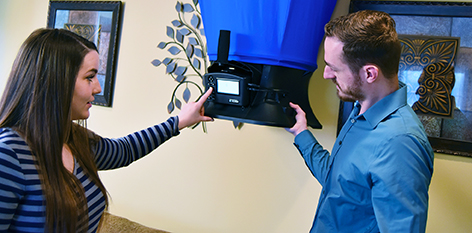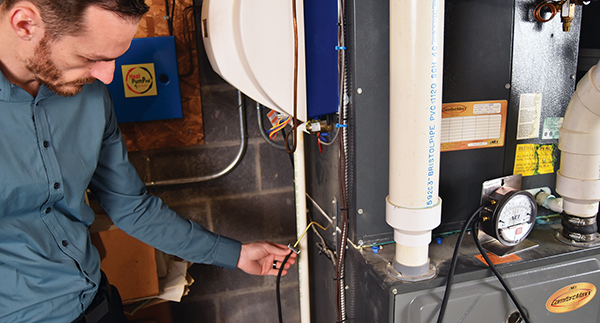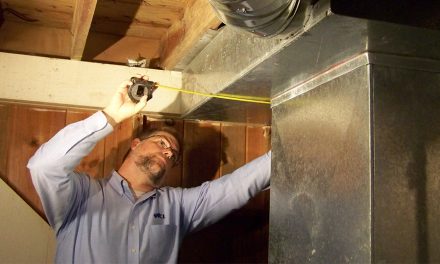Step 2: Evaluate The System

This step is critical in the educational selling approach. Whenever possible, be sure to involve your customer as you move through the house evaluating their system. For example, if you, airflow at registers in an uncomfortable room, hand the customer the flow hood and ask them to help take readings while you write them down.
This level of involvement is part of the process of getting them hooked on your company as the best choice.
It’s important to measure key static pressures, even if they were already measured by your technician when the lead was generated from a service or maintenance call.
This gives you the opportunity to explain how these readings are the ‘blood pressure’ of their system. If the system is in the attic or crawl, it might be best to take pictures with your smartphone so you can share visuals of the readings as well as ductwork and insulation issues.
Depending on the situation, other steps in the process can include more air ‘ow measurements, taking room temperature readings, checking insulation with an infrared thermometer, and performing a simple snapshot System Efficiency Rating. Performing this test will depend on whether you’re checking in cooling or heating mode, and whether the current equipment is still working.
Step 3: Review and Prioritize Findings Based on Their Needs
One of the bene’ts of measuring live system performance is you can immediately share your ‘ndings with your customer to help them understand what’s going on with their system.

This step reinforces how your company is different from competitors who just quote high-efficiency equipment swap outs and don’t address existing problems. This is a good time to explain how a high SEER box doesn’t guarantee energy savings or comfort. In fact, the customer may see no savings at all and be less comfortable if they don’t address the ‘rest of the system.’
At this point, you can offer to put together some different options that address the issues that are important to them. When done properly, this step will be a key factor in the customer’s decision to give you the job.
Be careful not to leave behind too much detail about your solution. Some people can’t resist the temptation to ‘shop’ your ‘ndings and solutions out to other contractors. What you should leave them with is a solid education about their system and what’s working well and what is not.
If they are getting multiple quotes, the customer will likely know more about the system than your competition. The danger of leaving your test data and detailed solution is a competitor may know enough to make it look like he’ll do the same things you recommended.
This is a good time to explain to the customer that not giving the competition your information is a great way for them to evaluate that company’s competence. What other criteria do they have to do this with – Price? They said they do great work. Who’s going to tell a customer they do lousy work?
Click for next page













Recent Comments